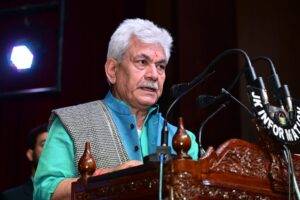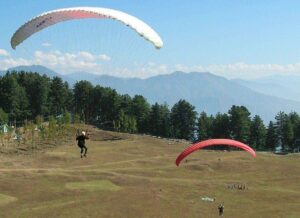Last Updated on May 5, 2020 at 9:22 am
The Resistance Front (TRF), the new face of militancy in Kashmir, is a bigger game plan of Inter Services Intelligence (ISI) and Pakistani army to again bring Kashmir to the limelight after abrogation of article 370.
While the situation was undoubtedly improving in Kashmir valley after abrogation of article 370 and 35A and start of assimilation process of the state that was systematically alienated from mainland India during past 70 years, the recent terror attacks have broken the lull.
During the months of April and May 2020 more than 28 terrorists have been neutralized in Kashmir but at least 15 security forces personnel have also attained martyrdom during the gunfights in different corners of the valley.
Rise in terror incidents in Kashmir
Since the abrogation of special status to Jammu and Kashmir that was granted to the state under Article 370, the atmosphere was moving towards normalcy. Bifurcation of the state into two Union Territories – J&K and Ladakh – had left Pakistan dumbstruck that opposed the decision of Indian government tooth and nail. From United Nations to international diplomacy, Pakistan tried all tactics but failed miserably.
Pakistan was left with no option but to reignite the fire of terrorism in Kashmir that was witnessing peace. A message was delivered to the international community by India that the abrogation of special status has brought Kashmir valley on the track of peace.
Battered due to anti insurgency operations and encounters, terrorists in Kashmir were already struggling. However Pakistan came up with an idea of forming a new terror group – The Resistance Front (TRF) – to deliver a message to the world that Kashmiris were now rising to fight against the abrogation of Article 370 that was done in Indian parliament on August 5 2019.
Strategy of TRF in Kashmir
During the recent past most of the terror related incidents that had taken place in Kashmir region had a mark of TRF. The terror organization was quick to take the credit of terror attacks even in Handwara on May 2 in which a Colonel, Major, Sub Inspector of J&K police and two soldiers were martyred. The attack and killing of three CRPF personnel on May 4 again in Handwara was also claimed by TRF.
However there is more to this than meets the eyes. Hizbul Mujahideen (HM) that mostly has local Kashmiri terrorists also claimed the terror attack in Handwara on May 2. While most of the top commanders of HM have been eliminated, TRF is a proxy of Lashker e Toiba, a Pakista backed terror organization.
TRF with mostly local cadre has been formed by the ISI to show to the world that militancy in Kashmir has increased after the abrogation of Article 370.
End of GOI’s claims
The government of India had been claiming since past sometime that the terrorism in Kashmir was now under control and there were no terror related incidents. On February 5 this year Union Minister of State for Home Affairs, Shri G. Kishan Reddy had claimed that there was a 73 percent drop in fatalities of security force personnel in Jammu and Kashmir. He had stated that the drop was witnessed after the abrogation of special status of the state.
He said while 82 security personnel were martyred during the period of 173 days from February 13, 2019 till August 4, 2019, 22 security force personnel were martyred during the similar period of 173 days from August 5, 2019 till January 24, 2020.
He stated that since August 5, 2019, 32 terrorists have been killed, 10 terrorists have been arrested and 19 civilians have lost their lives in terrorist attacks or during action against terrorist.
Intelligence agencies took TRF lightly
It is a matter of concern that the intelligence agencies and Jammu and Kashmri police were keeping a close watch on the activities of TRF and their Pakistani handlers since it was launched in March this year. According to the sources in intelligence, TRF was scheduled to be launched in North Kashmir in March but at least 10 of the terrorists were arrested. All of the arrested were new recruits.
“There is still a doubt among the intelligence apparatus in Kashmir. Either the attacks conducted by HM and Jaish-e-Mohammad (another terror outfit) are being claimed by TRF or Lashker e Toiba is giving credit for even its own attacks to the TRF only to deliver a message that it is TRF, a militant group of local Kashmiris, that is agitated over ending of special status to Jammu and Kashmir” said an intelligence official.
Is restoration of internet responsible for attacks?
On August 5, when Home Minister Amit Shah announced abrogation of article 370, mobile internet services in the state were suspended immediately to curtail any kind of organized violent protests in Kashmir. However broadband services continued in Jammu region.
There were groups that campaigned for restoration of mobile internet services in entire state and on February 25, the government resumed 2G internet on mobiles. However the campaign is still on to resume 4G internet services in J&K, intelligence agencies have found inputs that terrorists may be using virtual platforms to deliver messages even on 2G mobile network. This may have become the cause of sudden rise in militancy in Kashmir.
While the government has also stated that restoration of 4G internet in J&K was not possible as of now due to the threat of militancy in Kashmir, some groups were putting sustained pressure on the authorities for restoration of high speed internet.



